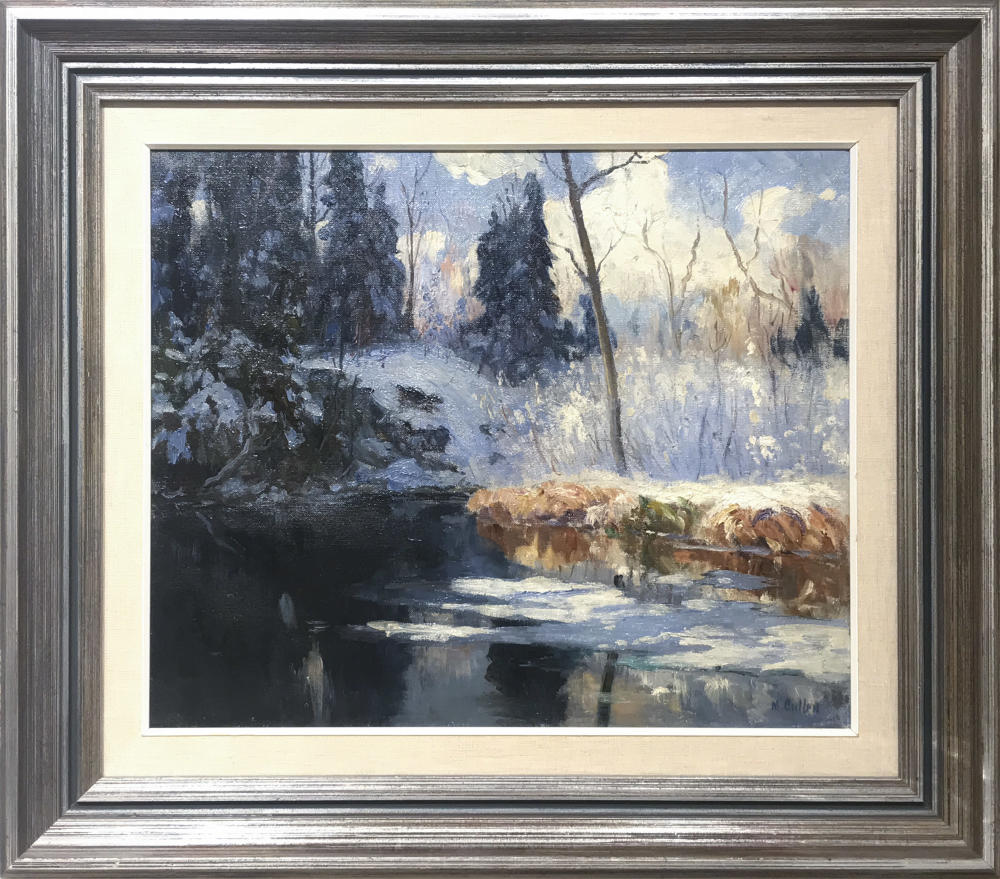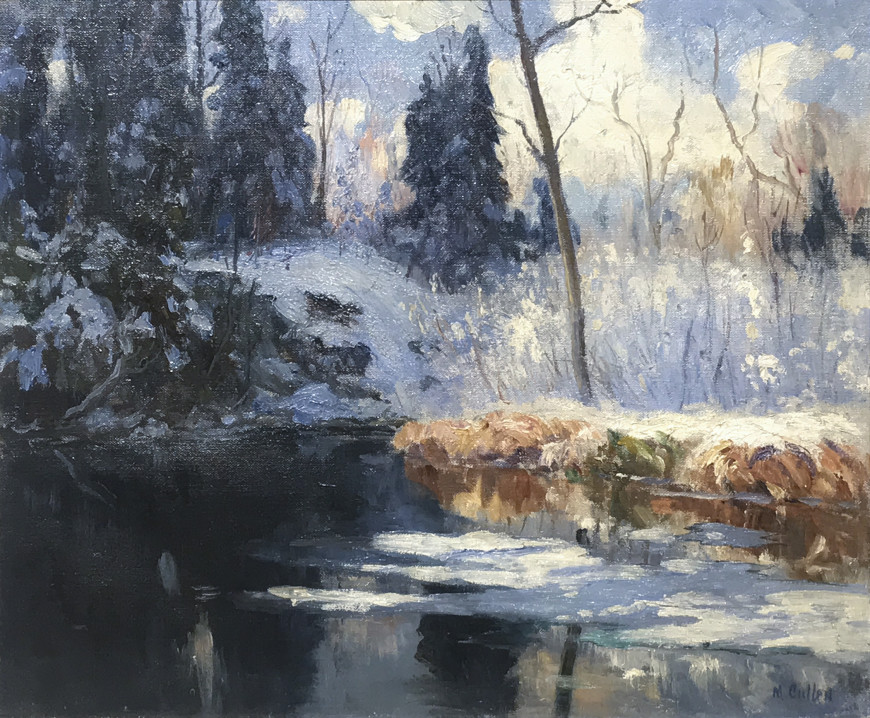-
Œuvres d'art
Maurice CullenSunglow, a Bend in the River, 1920 (circa)1866-1934Oil on canvas15 x 18 in
38.1 x 45.7 cm
Alan Klinkhoff Gallery Maurice Cullen Inventory No. AKG01397
Walter Klinkhoff Gallery Cullen Inventory No. 1397SoldInscriptions
signed, ‘M.Cullen’ (lower right)Provenance
Walter Klinkhoff Gallery Inc., Montreal;
Private collection, Montreal.
Our professional accolades celebrating the body of work by Maurice Cullen are humbled by those expressed by his contemporaries, peers, distinguished art critics, scholars and art dealer/friend cited below. They are but a sample of the consistent praise that Cullen receives for his tenacity of colour, inimitable style of painting, and for his integral role in the development of Canadian Impressionism.
“Morrice and Cullen opened our eyes to things no one ever thought of painting.” (1)
— A.Y. Jackson.
“The waveless, winding stream, the heavy peace of silence and solitude […] To Cullen this might well be a sacred stream,” recounted William Watson in 1931 of his trip to the Caché with Cullen. (2)
“In retrospect, it is clear that Cullen deserves greater recognition. […] In the first years of the century, Cullen had set many important precedents and fought the same battle that the Group was to fight in years to come. By the example of his life, his works and his teaching, he enabled Canadian artists to see and to paint the landscape in a new way. He was a man who loved nature, simplicity, and the freedom to paint.” (3)
—Peter Mellen, Ph.D, 1970
"It would not be too much to claim that the whole of Canadian landscape painting was changed by the return of Maurice Cullen to his native land in 1895. […] Where does Cullen stand in the history of Canadian art […]? It is already apparent that he brought to Canadian landscape a completely new vision. He was the first to interpret our landscape in a manner both personal and appropriate to the country. Though inspired by the impressionists, he nevertheless adapted their approach to suit another climate and another hemisphere.” (4)
—Robert Pilot, 1956
“Healthy, lusty colour which you see in Canada is no doubt considered vulgar—Cullen, I see by the papers, has painted a good picture—he is the man in Canada who gets at the ’guts of things.” (5)
—J.W. Morrice, 1910
"When Lismer … arrived in Canada from England in 1911, he saw Cullen’s paintings at an exhibition and was at once struck by their 'quality and valid interpretation' of the Canadian landscape and the way in which the artist had ’combined in them the Impressionist mode with a Canadian spirit […] The artist’s [Cullen] significance in Canada can hardly be overestimated…” (6)
—Joan Murray, 1973
“Some suggested an abstraction such as silence, others a feeling of loneliness, for Cullen seldom put a figure in his landscapes, leaving everything to nature and to the viewer. There was always beauty, and that wonderful transmutation, the definition of true art, that had so impressed me in my youth.” (7)
—William Watson, O.B.E., Canadian Art Dealer
Details of the Alan Klinkhoff Gallery Maurice Cullen Inventory Project will be announced shortly.
Notes
1. A.Y Jackson. "Painter’s Country: The Autobiography", (Clarke, 1976)
2. William R. Watson, O.B.E., Maurice Cullen, R.C.A. : A Record of Struggle and Achievement, (Toronto: Ryerson Press, 1931)
3. Peter Mellen, Maurice Cullen and the Group of Seven. (Vie des arts 61, 1970), 26-29.
4. Robert Pilot, Maurice Cullen, 1866-1934, exh. cat., (s.l. [Hamilton]: The Art Gallery of Hamilton, 1956), unpaginated
5. Donald W. Buchanan, “James Wilson Morrice” (Toronto: Ryerson Press, 1947), 36.
6. Joan Murray, Impressionism in Canada : 1895 - 1935, (Toronto: Art Gallery of Ontario, 1973)
7. William R. Watson, O.B.E., Maurice Cullen, R.C.A. : A Record of Struggle and Achievement, (Toronto: Ryerson Press, 1931)











